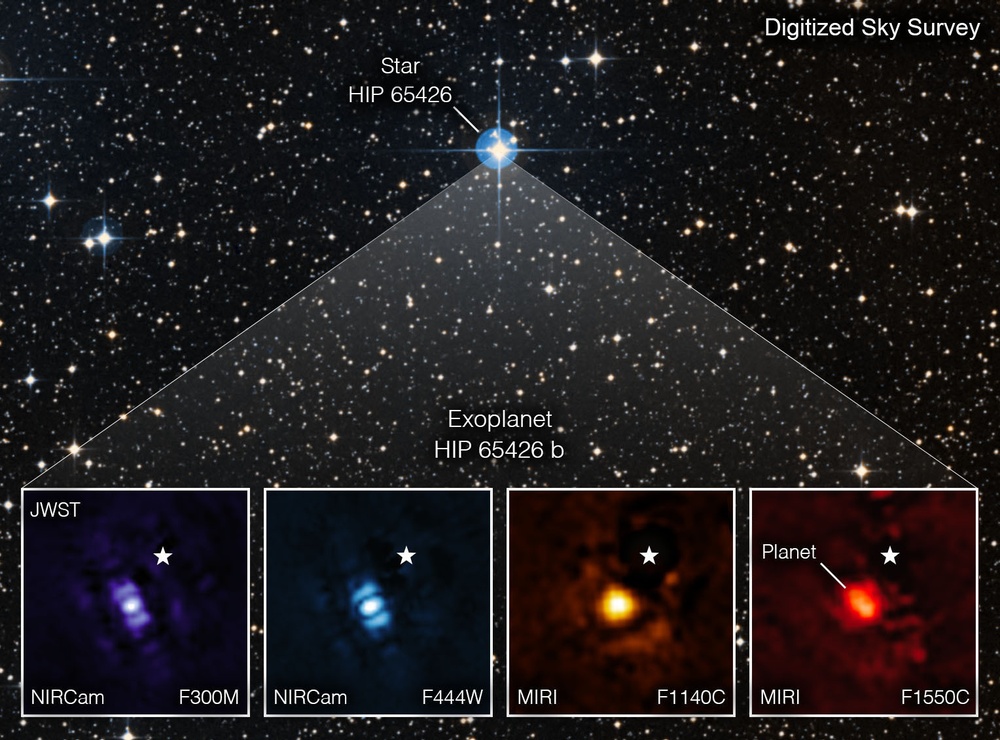
This image shows the exoplanet HIP 65426 b in different bands of infrared light, as seen from the James Webb Space Telescope: purple shows the NIRCam instrument’s view at 3.00 micrometers, blue shows the NIRCam instrument’s view at 4.44 micrometers, yellow shows the MIRI instrument’s view at 11.4 micrometers, and red shows the MIRI instrument’s view at 15.5 micrometers. These images look different because of the ways that the different Webb instruments capture light. A set of masks within each instrument, called a coronagraph, blocks out the host star’s light so that the planet can be seen. The small white star in each image marks the location of the host star HIP 65426, which has been subtracted using the coronagraphs and image processing. The bar shapes in the NIRCam images are artifacts of the telescope’s optics, not objects in the scene.
Credit: NASA/ESA/CSA, A Carter (UCSC), the ERS 1386 team, and A. Pagan (STScI).
| Date Taken: | 09.01.2022 |
| Date Posted: | 09.02.2022 11:31 |
| Photo ID: | 7399883 |
| VIRIN: | 220901-N-NO204-0001 |
| Resolution: | 1528x1130 |
| Size: | 273.09 KB |
| Location: | US |
| Web Views: | 93 |
| Downloads: | 6 |

This work, NASA’s JWST Takes Its First-Ever Direct Image of Distant World, by Paul Cage, identified by DVIDS, must comply with the restrictions shown on https://www.dvidshub.net/about/copyright.